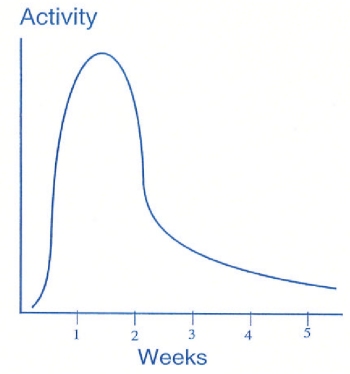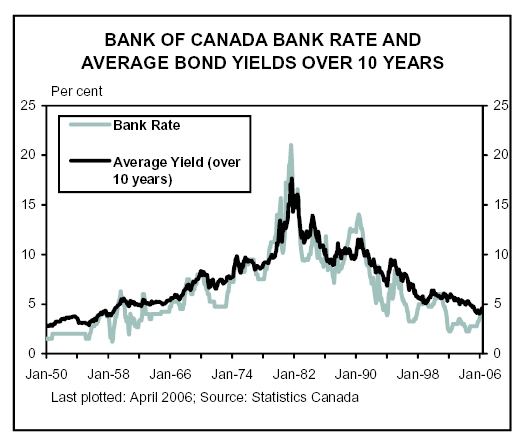ECONOMIC & FINANCIAL UPDATE
August 2006
The global economy has been performing remarkably
well in recent years. World economic growth has been
running at its strongest pace in more than three
decades, fueling a dramatic rise in commodity
prices, rapid growth in profits and better labour
market opportunities. Booming economic conditions in
China, India and a number of other emerging
economies led the way, but the industrialized
nations participated as well. For example, after
more than a decade of stagnation, Japan turned a
corner last year with its banking sector
recapitalized, deflation drawing to a close and amid
stronger domestic economic conditions. In Europe,
the corporate sector has fared well, and although
economic growth has been modest, there were signs of
improvement in late 2005 and in the first half of
2006.
In North America, economic times have also been
better than most people realize. Economic growth in
both the United States and Canada has been solid, as
unemployment fell to historically low levels and
profits advanced at a robust pace. Also, domestic
demand in the form of consumer spending and business
investment has proven strong. In Canada, the main
economic handicap has been the lagged fallout from a
high-flying Canadian dollar. Although it has been a
painful adjustment, businesses have coped well by
cutting costs and boosting their productivity in
order to limit their loss of competitiveness; as a
result, the Canadian economy expanded at a healthy
pace. Looking forward, however, it appears that
economic conditions may be less robust.
Economic expansion to moderate
In the United States, the U.S. Federal Reserve has
raised interest rates considerably from their 1.00
per cent trough in order to ensure that inflation
remains in check. The result of these higher
interest rates means that monetary policy could act
as a headwind to the economy going forward. In
addition to tempering consumer spending, and to a
lesser extent business investment, higher interest
rates are cooling U.S. real estate markets. This is
likely to dampen consumer spending as the powerful
wealth effects arising from past home price
increases, mortgage refinancing and cashing-out of
home equity wanes. As a result, TD Economics
believes that the average annual pace of U.S.
economic growth in 2007 will likely slacken.
However, a hard landing is not anticipated and some
improvement can be reasonably expected in the latter
part of the year.
Any moderation in U.S. economic growth will impact
other economies. Softer U.S. demand would likely
dampen international exports, leading to slower
economic growth in the major U.S. trading partners.
However, given the momentum in world expansion, the
overall pace of global growth is expected to remain
above its historical average, and there is little
chance that the Chinese and Indian boom could be
derailed. Canada could be adversely affected, as
exports represent roughly 40 per cent of the economy
and as 85 per cent of Canadian shipments head
Stateside. Simultaneously, the Canadian economy will
be feeling the lagged effect of the Bank of Canada’s
rate hikes delivered in late 2005 and in 2006, which
suggests some moderation in consumer spending and
housing markets. Overall, the annual pace of
Canadian economic growth is forecasted to slow
modestly in 2007, but this national perspective
masks the likelihood of continued above-average
growth in Western Canada, and a sub-par performance
in Central Canada and parts of Atlantic Canada.
Financial implications
This economic backdrop has many financial
implications.
First, weaker economic growth suggests a modest pace
of corporate profit growth in 2007. However, strong
corporate balance sheets should allow the majority
of firms to ride out any weaker economic times.
Second, commodity prices are vulnerable to a further
correction, as a slowdown in the world’s largest
economy – the United States – could result in softer
global demand for raw materials. Having said that,
price levels should remain high, supported by strong
demand from Asia. Some commodities may also break
from the general trend. So, while oil prices could
drop, natural gas prices are forecast to rise –
barring another extraordinarily mild winter.
Third, interest rates are likely to decline in late
2006 and early 2007. Weaker economic growth would
lower the risks of inflation, leading to a rally in
bonds. There is also a possibility that the Federal
Reserve and the Bank of Canada could cut rates to
limit the slowdown. However, as economic conditions
gradually recover, interest rates would most likely
rise once again.
Fourth, the U.S. dollar is likely to lose ground
relative to the other major currencies, including
the Japanese yen and the euro. The Canadian dollar
could also benefit from U.S. dollar weakness, but in
recent years the dominant driver behind movements in
the exchange rate has been commodity prices.
Nevertheless, even if commodity prices decline as
anticipated, the Canadian dollar should remain
strong and it will likely hold well above its
estimated fair value of 82 U.S. cents.
Weakness will pass
Lastly, it should be stressed that the economic
slowdown should prove mild and transitory. While
economic and financial volatility may be present,
the underlying fundamentals should remain positive.
Unemployment is forecast to remain low, interest
rates are anticipated to remain modest by historical
standards, and income is likely to continue to rise.
As a result, households, businesses and investors
should not panic if there are signs of economic
moderation, as the economies should recover in the
near future. Used with permission from TD Canada Trust.
For more information please contact A. Mark Argentino
A. Mark Argentino Associate Broker, P.Eng.,
Specializing in Residential & Investment Real Estate
RE/MAX Realty Specialists Inc.
2691 Credit Valley Road, Suite 101, Mississauga, Ontario L5M 7A1
BUS 905-828-3434
FAX 905-828-2829
E-MAIL mark@mississauga4sale.com
Website: Mississauga4Sale.com
















